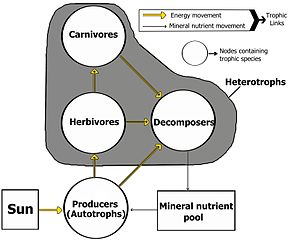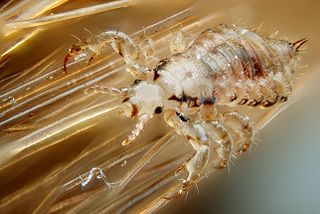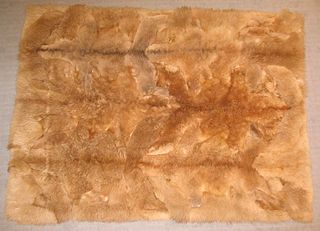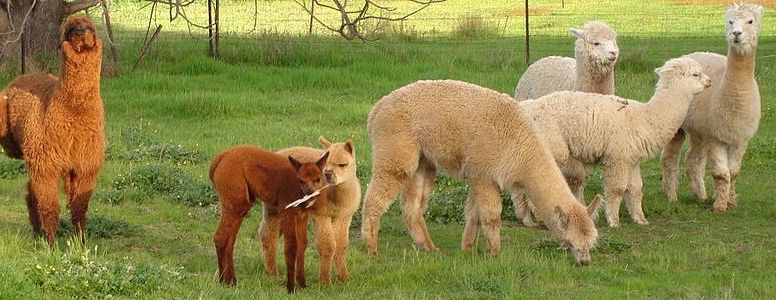
Interactions
The alpaca is a primary consumer, meaning that it only eats grass and other vegetation, or otherwise call a herbivore. The alpaca also serves host to many parasites, both internal and external. A parasite is an organism that grows, eats, and has shelters from another organism. In other words this is good for the organism getting food, but bad for the alpaca.
Whipworm
The Whipworm lives inside of the alpacas large intestine or third stomach
compartment. The whipworm produces eggs that leave the body through the
alpacas feces. The eggs can live along time outside of a host. When the
eggs end up getting consumed by another alpaca they hatch in the small
intestine, known as the second stomach compartment. They then migrate
back to the third stomach compartment. (12)
Tapeworm
The tape worm is a long white worm. They use hooks to hold onto the small intestine of
the alpaca. Small pieces of the tape worm that contain eggs are released
in the feces of the alpaca. The eggs look like tiny pieces of rice in
the feces. The eggs then get consumed by a mite, the intermediary host.
(12) The mites lives in the grass the alpaca eats, and soon an alpaca
will eat it; then the cycle will restart. 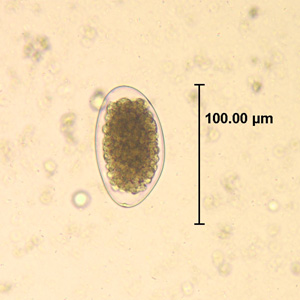
Stomach worm
Trichostrongylus, the stomach worm, are parasites that live in the
alpacas small intestine. The eggs are released in the alpacas feces.
Then eggs then hatch and develop in the soil where the alpacas graze.
The alpacas can eat them in the grass or soil. The alpaca can also get
the stomach worm if they drink contaminated water. (12)
Nematodirus
Nematodirus is a parasite that thrives in cool and wet pastures. The
larvae can live outside of the host for awhile; even handling the winter
weather in alpaca feces or the soil. The alpaca consumes them buy eating
grass with the larvae on. Nematodirus then mature in the alpacas small
intestine.(12)
Lice
Alpacas encounter two types of lice: biting lice and sucking lice. They
can live on the alpaca in its fleece. The sucking lice can cause disease
to the alpaca or even anemia.(12)
*Most internal parasites affect the alpacas that are living on farms, this is because they are fenced in and tend to poop in the same place. The other alpacas then come in contact with the feces with the parasites eggs. Also, some of these external parasites, like the tick, are only found in some geographical areas. (12) To learn about other parasites that affect domesticated alpacas click here!
And you only thought food was in the alpacas stomach!
Alpacas have bacteria in their stomachs that help them break down the
vegetation they eat. Alpacas need microbes to break down cellulose,
urea, amino acids. By doing this the alpaca will have energy from fatty
acids. The alpaca has a mutualistic relationship with these bacteria.
The bacteria break down food for the alpaca and they get a place to
live. To read about the places of fermentation go to the
nutrition page!
Alpacas can get viruses!
The Bovine viral diarrhea virus (BVDV) does not only affect cattle, but
has now been shown to affect alpacas. BVDV has been shown to cause
illness and abortions in alpacas. This is because the BVDV suppresses
the immune sysem. Most animals that contract BVDV do not actually have
diarrhea. There are many different strains of this virus. If a cria is
born with BVDV, it will have health problems and probably will spread
the disease to rest of the herd. (10)
What is for dinner?
The Vicugna pacos is made in many different dishes! All the way from soup to alpaca stuffed peppers! Check out the recipes page for some great recipes. Alpacas are not sustainable as a food source because they are only eaten in South America.
There are other animals that enjoy to eat alpacas besides humans. Bears, coyotes, and mountain lions.
Alpacas are not just used as food, but also a source of fleece. Alpacas provide grey, white, black, brown, and every color in between of fleece. The fibers are elastic and strong. They are straighter and silkier than sheep's wool.
Their fleece is is spun into yarn and then can be made into fine cloth. This is the primary reason for alpaca farms around the world. Their fleece can be made into rugs, scarves, socks, and many other things.
Want to buy alpaca products? Check out these websites!
Alpaca Nation
Americas Alpaca
Mt. Caesar Alpacas
